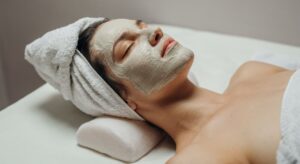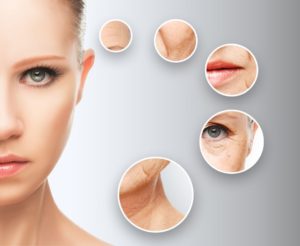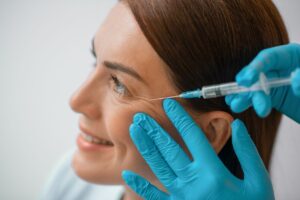In our quest for flawless skin, treating acne and post-acne scars is a battle many of us face. With various treatments available, understanding the benefits of each method can be overwhelming. One method, microneedling, has proven to be particularly effective in treating acne scars. In this article, we’ll delve into the benefits of microneedling for acne scars and compare it to other available treatments.
What is Microneedling and How Can It Treat Acne Scars?
Defining Microneedling
Microneedling is a minimally invasive dermatological procedure that involves puncturing the skin with fine, short needles. This initiates skin rejuvenation by promoting new collagen production, leading to a reduction of scars and wrinkles, including the appearance of acne scars.
Mechanism of Microneedling in Scar Treatment
The microneedling treatment relies on the skin’s natural healing abilities. As the needle punctures the skin, it causes a minor “injury.” In response, the skin triggers a wound healing response that forms new collagen, improving the skin’s appearance by smoothing out atrophic scars and fine lines. Although microneedling treatment is a minimally invasive scar treatment, consulting a dermatologist is essential to ensure safe and effective results.
Different Types of Acne Scars and How Microneedling Can Help
There are various types of scars: atrophic acne scars are the most common, manifesting as flattish depressions in the skin. Microneedling for acne scars has shown excellent results in the treatment of this type of scar. It’s important to remember that every skin type is unique, making consultation with a dermatologist crucial to determine the feasibility of microneedling for individual acne scar treatment.
Acne Scar Treatments: Comparing Microneedling Versus Other Methods
Microneedling Vs. Laser Treatment
Comparing microneedling to laser treatment for acne scars, both can provide effective results. However, microneedling is often preferred due to its capacity to rejuvenate the skin without causing pigment changes, making it suitable for darker skin types that might experience unwanted pigmentation with laser treatments.
Chemical Peels Vs. Microneedling
When comparing chemical peels with microneedling, both methods exfoliate the skin, promoting skin rejuvenation. While peels may offer quicker results, microneedling could better treat acne scars, providing deeper, more targeted healing.
Creams and Topical Treatments Vs. Microneedling
Contrasting topical treatments with microneedling, topicals are often less effective on atrophic scars because these are deep within the skin. Specifically, for treating acne scars, microneedling offers superior penetration, better targeting the issues that cause irregularities in skin texture.
How to Get Microneedling for Acne Scars and What to Expect in a Session
Where Can You Get Microneedling?
Your local dermatologist can perform microneedling, ensuring a professional and skilled treatment. Before treatment, it’s critical to undergo a consultation to assess your skin type and scar severity.
What Happens During a Microneedling Session?
In a microneedling session, a microneedling device is used to create micro-punctures in the skin. Typically, numbing cream is applied to minimize discomfort during the procedure. Immediately after, your skin may appear red and feel sensitive, similar to a mild sunburn.
The Expected Results and Side Effects of Microneedling
Most individuals see noticeable improvement in the appearance of acne scars after several microneedling treatments. Despite this, you won’t see the same results immediately after your first treatment.
The Use of At-Home Microneedling Devices for Acne Scars
How Does At-Home Microneedling Work?
At-home microneedling uses a similar principle to professional microneedling, using a device to puncture the skin. However, these devices typically have shorter, less sharp needles and thus provide less dramatic results.
Safety Measures for At-Home Microneedling
While at-home microneedling can be a cost-effective alternative to professional treatments, it’s essential to be mindful of safety. Only use devices from reputable brands and ensure to follow the manufacturer’s instructions for use. Maintaining hygiene is also critical to prevent infection.
The Effectiveness of At-Home Microneedling Vs. Professional Treatment
While using at-home microneedling devices can lead to improvement in skin texture, these devices lack the deeper penetration of professional treatments, leading to less significant skin improvement. Therefore, professional microneedling treatments typically provide better results.
Microneedling for Active Acne: Is It Safe and Effective?
Using Microneedling for Active Acne
Though primarily used for acne scars, microneedling is also thought to shorten active acne life cycles. However, it’s important to undergo microneedling with a knowledgeable professional to avoid further irritation or spread of active acne.
Effects of Microneedling On Different Skin Types
Microneedling is generally safe for all skin types, albeit with varying results. Darker skin types should note that while microneedling is a safer option than laser treatment, care should be taken to prevent post-inflammatory hyperpigmentation.
Safety Considerations of Microneedling for Active Acne
Using microneedling for active acne should be approached with caution. Consultation with a dermatologist is essential before deciding to use microneedling for this purpose as it can potentially exacerbate acne or spread bacteria.
*Information in this article is not medical advice and may not be factually accurate. It is intended for entertainment purposes only. Consult with a physician before attempting any tips in this blog post and to get the most up to date factual data about any procedure or treatment.














